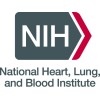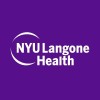
Observational Study of Specificity of Mycobacterium Tuberculosis Screening and Diagnostics in HIV-Infected...
HIV InfectionsTuberculosisAn estimated 3 million HIV-infected individuals will enter programs for antiretroviral (ARV) treatment in the coming year, with projected rates of requirement for ARV therapy extending to more than 10 million in sub-Saharan Africa, southeastern Asia, and Latin America in the coming decade. In these settings, Tuberculosis (TB) is an endemic infection in the population, and an estimated 30-60% of adults have been infected with TB, the leading opportunistic infection associated with HIV infection. The purpose of this study is to construct a standardized diagnostic evaluation (SDE) for TB that provides an increase in identification of participants with active pulmonary TB, without sacrificing specificity.

Latent Tuberculosis Infection in Cancer Patients
Advanced CancerPrimary Objective: 1. To evaluate the performance of the new T-SPOT.TB test and the conventional TST for screening of Latent Tuberculosis infections in patients with cancer and those undergoing Hematopoietic Stem Cell Transplant. Secondary Objectives: To examine the factors associated with positive response to T-SPOT.TB and the TST (tuberculin skin test) in patients with anergy. To determine the impact of immunosuppressive and antineoplastic therapy on the screening performance of T-SPOT.TB and the TST in cancer patients.

Diagnosis of Tuberculous Meningitis by ESAT-6 in CSF
Tuberculous MeningitisEarly and reliable diagnosis of tuberculous meningitis (TBM) still poses a great challenge. One of the underlying difficulties is due to the fact that tubercle bacilli are mainly not present in the cerebrospinal fluid (CSF) but in the phagocytotic macrophages. The present study was designed to demonstrate early secretory antigenic target 6 (ESAT-6), a mycobacterium-specific antigens, in the macrophages in infected CSF samples and compare the efficiency of this antigen in the laboratory diagnosis of TBM.

Characteristics and Prevalence of Tuberculosis and HIV in Masiphumelele Township, Cape Town, South...
HIV InfectionsTuberculosisThe purpose of this study is to determine the number of people infected with tuberculosis (TB) in the Masiphumelele Township of Cape Town, South Africa, a community with high rates of TB and HIV. This study will also examine the genetics of TB and the relationships among active TB infection, new HIV infections, and HIV disease progression.

Immune Response to Mycobacterium Tuberculosis Infection
Latent TuberculosisThis study will examine how the immune system responds to infection with Mycobacterium tuberculosis bacteria (bacteria that cause tuberculosis) in order to better understand how the germ produces infection and how the immune response might work to control the infection. Only about one in 10 people infected by M. tuberculosis become sick, sometimes years or even decades after exposure. It is not known why some people become sick and most do not, but the immune system of people who never develop disease may be better able to control the bacteria. This study will evaluate the latent form of M. tuberculosis infection to further the understanding of the immune mechanisms - particularly the role of certain white blood cells - involved in the disease process. Healthy volunteers 18 years of age and older may be eligible for this study. Candidates are screened with a medical history, family history of medical conditions, sexual history, history of drug use, physical examination and blood tests, including a test for HIV. People in Mali, West Africa, and in local health clinics in the United States may participate. At the start of the study, participants have blood tests and a tuberculin skin test (PPD test), which indicates whether a person has been exposed to tuberculosis bacteria. For the PPD, a tiny amount of liquid containing dead tuberculosis antigen is put under the skin of the forearm with a needle. The antigen cannot cause infection or disease. After 3 days, participants have another blood test and the site of the tuberculin test is examined for swelling that would indicate a positive result. Participants with a positive PPD have a chest x-ray to check for tuberculosis disease. Those whose x-ray is also positive are withdrawn from the study and referred to their doctor for evaluation and treatment. Those whose x-ray is negative return to the clinic within 3 weeks of the tuberculin test to give another blood sample. Participants whose PPD is negative have a second tuberculin test 10 to 21 days later and return 3 days after the test to determine if it is still negative or if it is positive. (Some people who are negative after the first test may test positive after the second procedure.) Those whose test is still negative end their participation in the study at that time. Participants whose second PPD is positive have a chest x-ray as described above, and those with a negative chest x-ray return in 3 weeks to donate one last blood sample. The purpose of the present study is to evaluate the latent form of this infection, the prevalence of which worldwide exceeds that of active disease. Our hypothesis is that in latent tuberculosis antigen specific effector memory CD4+ T cells are responsible for the generation of clinically measurable delayed type hypersensitivity and that central memory CD4+T cells are not directly involved in this process. We base this idea on the assumption that latent tuberculosis is a state of antigen persistence and that effector memory T cells should be maintained as long as antigen/infection is present. We propose to conduct this study in Mali, West Africa and local clinics in the U.S. Tuberculosis affects 593/100,000(2) individuals in Mali and most have been exposed to the disease. Additionally it would be important to evaluate the same parameters locally as latent infection is one of the major factors for reactivation tuberculosis in this country. Patients would be enrolled in 4 major groups: HIV-/TST- (Group A), HIV-/TST+ (Group B), HIV+/TST+(G roup C) and HIV+/TST- (Group D). To evaluate this hypothesis we plan to enroll between 100 - 300 patients over the course of 2 years from both countries. Blood samples before and at predetermined time points after the application of Purified Protein Derivative (PPD) will be obtained to determine the fraction of CD4+ T cells which produce interferon gamma in response to stimulation with PPD with a 16hr antigen stimulation assay. Appropriate staining will be done to ascertain the phenotype as well as cytokine production (Interferon gamma,( IFN gamma), Interleukin 2 (IL2) and Tumour Necrosis Factor ( TNF)). Additionally lymphocyte proliferation will be studied using 5-(and-6)-carboxyflouorescein diacetate succinimidyl ester (CFSE.) In conducting this study we hope to further the understanding of the immune mechanisms involved, particularly mechanisms of T cell memory, which would provide insights into TB and HIV pathogenesis. We also believe that understanding these mechanisms could lead towards establishment of surrogates for immunity in TB vaccine studies, which could enhance vaccine trial design. It might also help in understanding better the immunological dynamics of tuberculosis co-infection in individuals with HIV infection.

Tuberculosis Prophylaxis in the Homeless--A Controlled Trial
Lung DiseasesTuberculosisTo conduct a three-arm, randomized controlled trial of methods to improve adherence to biweekly directly observed prophylaxis (DOPT) for tuberculosis in homeless adults in San Francisco.

Behavioral Interventions for Control of TB
Lung DiseasesTuberculosisTo compare alternative methods to ensure completion of treatment and preventive therapy for tuberculosis (TB) in inner cities, and to identify the most cost-effective methods to accomplish that. The basis for comparison included adherence rates and cost savings as primary outcomes, and other parameters such as patient satisfaction, development of social networks, and participation in support programs as secondary outcomes. Two clinical trials were conducted with patients from Harlem. Among those with active disease, a clinic-based surrogate family model was compared to traditional community-based directly observed therapy (DOT). Among those eligible for preventive therapy, a community-based intervention conducted by trained graduates of a TB DOT program (peer workers) was compared to traditional self-administered preventive treatment.

Behavioral Interventions for Control of Tuberculosis
Lung DiseasesTuberculosisTo develop and test various educational strategies targeting primarily minority TB-infected adolescents at two health centers in Los Angeles in an experimental design to assess the relative effectiveness on medication adherence, appointment keeping, and completion of therapy.

Tuberculosis in a Multiethnic Inner City Population
Acquired Immunodeficiency SyndromeHIV Infections3 moreTo determine the incidence of tuberculosis in an inner city population, identify risk factors for TB, describe the natural history in adults and children, evaluate the effect of Mycobacterium tuberculosis (Mtb) co-infection on the progression of human immunodeficiency virus disease, and determine factors that contribute to compliance and non-compliance with prophylaxis and treatment.

Usability Study of IeHS in Indonesia
Human Immunodeficiency VirusTuberculosis3 moreTechnology that has a particular focus on patients' needs and ease-of-use and -access plays a significant role in the development of e-health and m-health. The proposed model of a secured mobile health application may promote patient's self-management and enhances adherence in chronic therapy exactly as it is easy-to-use, reducing patient's burden in accessing medication information and instructions, and providing the opportunity for direct communications with health providers in charge for each patient with access to mobile technologies. Consequently, medication errors and unnecessary paperwork in the healthcare system will be avoided as well as giving more time for healthcare providers to pay greater attention to delivering medical care effectively and efficiently.
